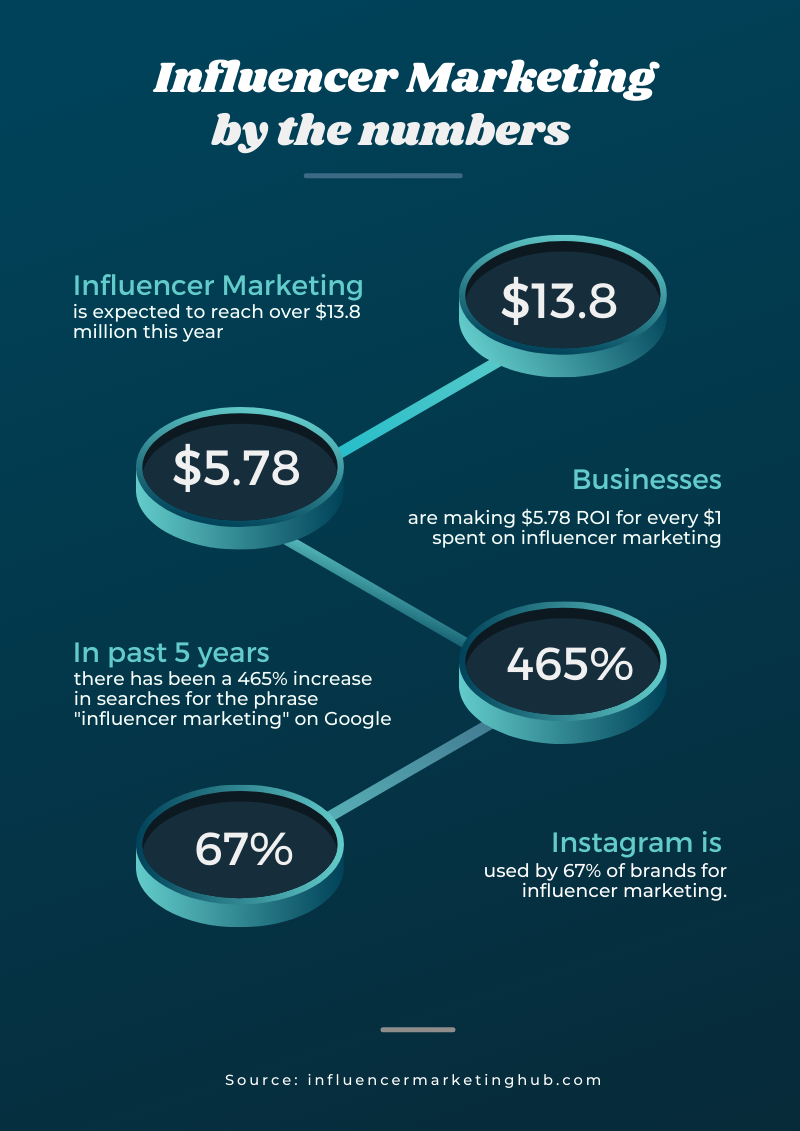Here’s What You Need to Know About Influencer Marketing
Scrolling through social media without seeing a sponsored post or two is nearly inevitable these days thanks to influencer marketing. Although it isn’t a new concept to the industry, influencer marketing has taken off in recent years due to the increase in value of word of mouth when it comes to buyers making decisions.
Let’s take a more in-depth look at marketing’s newest trend and how it can take your strategy to the next level:
What is an influencer?
Webster’s Dictionary says that the definition of an influencer is: one who exerts influence.
Let’s put a marketing definition on it: an influencer is anyone that plays a role in affecting the purchasing decision of their audience based on their knowledge, power, or relationship with their audience.
Influencers can be utilized in a brand’s marketing strategy as a content-driven approach to promoting a product, service, or even aim to improve brand recognition. It’s a collaboration that can take place through Instagram, LinkedIn, YouTube, TikTok, blogs, and more.
You may think that there’s no way that just anyone can be considered an influencer. It’s true – if they have a following, they can be an influencer. An influencer can range from a popular photographer on Instagram to a well-respected marketing professional on LinkedIn.
There are many layers to influencers we’ll break down. (Good news, not everybody has to be at Kim Kardashian status when it comes to influencer marketing😉)
Types of Influencers
1. Mega
Mega-influencers are probably what you think of when you hear the phrase “influencer”. There isn’t a set number of followers they have to have to be in this category, but a classification of this group is their heavy online presence. Many mega-influencers have earned their fame offline whether it be in music, sports, movies, reality TV, etc.
A pro for using mega-influencers is that they give you the greatest amount of exposure. They’re usually used to working with brands and companies on influencer campaigns. However, the price tag for a mega-influencer is hefty. Their services can cost up to $1 million per post and they will be picky with who they want to partner with.
Kevin Jonas of the Jonas Brothers can be seen here partnering with Aperol.
Cody Rigby is a Peloton instructor with over 986,000 followers who has partnered with Chobani, Harrys, and more.
Macro-influencers are an ideal option for targeting a certain type of customer while reaching a massive audience. Cody‘s primary following comes from the Peloton community as it was his “claim to fame.” With close to a million followers, there is a strong reach that comes with his influencer marketing posts.
3. Micro
One more step down the influencer ladder is micro-influencers who have between 10,000 to 100,000 followers. Typically, micro-influencers focus on a specific niche and are considered experts in their field.
Even though they have a smaller following, micro-influencers have a stronger relationship with their audience. Having fewer followers compared to macro and mega- influencers allows them to form a genuine connection when posting. This easily allows them to push the perception that they are the experts in their area.
Micro-influencers cost less but are the most effective as their audience has trust in them. This will lead to trusting your brand as they are hearing first-hand from the expert who is posting.
McKenzie Morgan is a college student at Kent State University who doubles as a fashion blogger with 31,000 Instagram followers. In this post, she is using her college student status to partner with CourseHero. Her brand deals typically lay within the travel and fashion categories and are easily disguised.
Notice that McKenzie’s photo is super casual. You don’t even realize that it’s an ad until you read the caption. This is marketing GOLD for Gen Z as they strive to be loyal to brands that are authentic.

@bikiniisandbelliniis is a law student turned influencer who got her start on TikTok while documenting her bar exam journey. She has brought some of her audience to Instagram where she can be seen partnering with brands such as Express.
Influence doesn’t have to live on Instagram. Ann Tran is a TedX speaker and social media traveler writer. Her following on LinkedIn is under a thousand. She’s partnered with Free2move on both LinkedIn and TikTok for this.

Why should you try influencer marketing?

Don’t look at influencers as just a marketing tool. Think of it more along the lines as a relationship to reach marketing objectives. Influencer marketing is not about quick results, it’s about building a new relationship with an audience to prove your credibility as a brand!
Author Info

